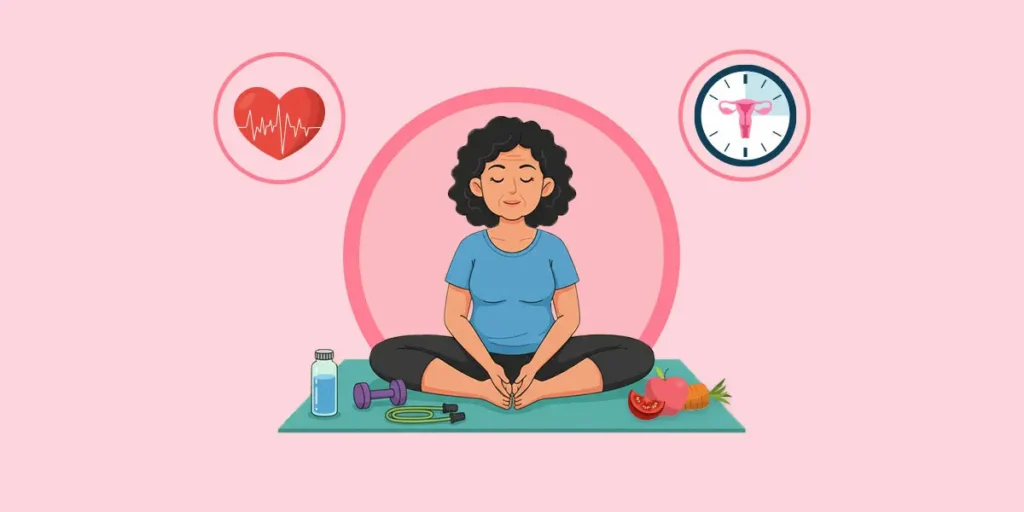Understanding Diabetes
One word that stirs fear and uncertainty and answers a thousand more questions. Well, what if we told you that with appropriate knowledge, support, and strategy, it can be possible to thrive with diabetes? In the following blog post, we venture into the diabetes world, type, symptoms, and management.
We will also debunk some myths and misconceptions along with the best tips of and remedies, that helps to combat diabetes more effective.
What is Diabetes?
Diabetes occurs when your blood sugar (glucose) is too high. It develops when your pancreas doesn’t make enough insulin or any at all, or when your body isn’t responding to the effects of insulin properly. Diabetes affects people of all ages. Most forms of diabetes are chronic (lifelong), and all forms are manageable with medications and lifestyle changes.
Types of Diabetes
- Type 1: Body doesn’t produce insulin.
- Type 2: Body can’t use insulin properly.
- Gestational: Develops during pregnancy.
Understanding which type you have is crucial for effective management and treatment.
Causes and Risk Factors
So, what causes diabetes? While we can’t change our genetic makeup, there are lifestyle factors that can increase our risk. These include a diet high in sugar and unhealthy fats, lack of physical activity, and obesity.
Having a family history of diabetes, particularly a first-degree relative like a parent or sibling, also increases your risk. Additionally, certain ethnic groups, such as African Americans, Hispanics/Latinos, and American Indians, are more prone to developing diabetes.
Age is also a factor, with risk increasing after 45. Other factors like polycystic ovary syndrome (PCOS), high blood pressure, and high cholesterol can also contribute to the development of diabetes.
Early Signs and Symptoms

So, do you know if you have diabetes? Diabetes can manifest differently in different people, and recognizing the early warning signs is crucial for prompt diagnosis and treatment. Here are the common symptoms to watch for-
Early Warning Signs
- Increased Thirst and Hunger: When there’s too much glucose in the blood, the body tries to flush it out by producing more urine, leading to dehydration and hunger.
- Frequent Urination: High blood sugar levels increase the production of urine by the kidneys, thus increasing the number of trips to the bathroom.
- Fatigue: High blood sugar levels can lead to fatigue, weakness, and a feeling of being lethargic.
- Blurred Vision: High blood sugar levels cause the lens in the eye to swell, resulting in blurred vision.
- Slow Healing of Cuts and Wounds: High blood sugar levels can affect the body’s ability to heal wounds.
- Tingling or Numbness in Hands and Feet: High blood sugar levels can damage the nerves, causing tingling or numbness in the hands and feet.
Key Takeaways
- Children are more likely to develop Type 1 diabetes, which often appears suddenly with severe symptoms. However, Type 2 diabetes is becoming more common in children due to lifestyle factors like obesity.
- Adults are more prone to Type 2 diabetes, which develops gradually and may go unnoticed for a long time.
- Children with diabetes may show signs like bedwetting, irritability, and unexplained weight loss, while adults often experience fatigue, slow-healing wounds, and frequent infections.
- Early detection is crucial in both children and adults to prevent complications and ensure proper management.
Diagnosis and Tests
If you’re experiencing any of these symptoms, it’s crucial to consult with your doctor. They’ll perform a series of tests to diagnose diabetes, including:-
- Fasting Plasma Glucose (FPG) Test.
- Oral Glucose Tolerance Test (OGTT).
- Hemoglobin A1c (HbA1c).
Regular checkups are vital to manage the condition and preventing complications.
Easy Ways to Manage Diabetes
Healthy Practices

- Healthy Foods: Choose fresh fruits, vegetables, whole grains, and lean proteins. Avoid too much sugar, junk food, and sugary drinks. Always eat 1 year old grain.
- Timely meals: Eat meals at regular times to keep blood sugar steady.
- Stay Active: Exercise helps lower blood sugar. Try walking, yoga, or dancing. Aim for at least 30 minutes of activity most days. Find fun ways to stay active, like playing a sport or gardening.
- Medicines: If your doctor gives you insulin or medicine, take it as prescribed. Check your blood sugar regularly to see how you’re doing. Talk to your doctor if you feel unwell or need changes in your treatment.
Additional medical care may be needed to treat the effects of diabetes, foot care to treat ulcers, screening and treatment for kidney disease, eye exams to screen for retinopathy (which causes blindness). By eating well, staying active, and taking medicine on time, you can manage diabetes and stay healthy!
Prevention
Type 1 diabetes can’t be prevented, but Type 2 diabetes can often be delayed or prevented by maintaining or through some lifestyle changes that are used to manage diabetes (eating a healthy diet, staying at a healthy weight, and getting regular physical activity). These lifestyle changes may also help prevent gestational diabetes.
Diet for Prevention of Diabetes
1. Focus on Low-Glycemic Foods: Choose foods that cause a slow, steady rise in blood sugar:
- Whole Grains: Brown rice, quinoa, oats, whole wheat
- Legumes: Lentils, chickpeas, black beans
- Non-starchy vegetables: Spinach, broccoli, bell peppers, cauliflower
- Berries: Blueberries, strawberries, raspberries
2. Increase Fiber Intake: Fiber slows glucose absorption and keeps blood sugar levels stable:
- Vegetables: Carrots, zucchini, kale, cabbage
- Fruits (moderation): Apples, pears, oranges (with skin)
- Seeds & Nuts: Chia seeds, flaxseeds, walnuts, almonds.
3. Lean Proteins for Satiety: Protein prevents blood sugar spikes:
- Tofu
- Tempeh
- Lentils
- Cottage Cheese
4. Drink Smart:
- Water & Herbal Teas: Keep hydration levels optimal
- Green Tea: May improve insulin sensitivity
- Avoid Sugary Drinks: Soda, sweetened juices, energy drinks
Home Remedies for Diabetes

- Fenugreek Seeds or Saunf have strong blood sugar-regulating properties. They can be taken in diet as it is or soaked in water.
- Bitter Gourd (Karela) is highly beneficial for diabetes management. It reduces blood sugar levels. Including bitter gourd dishes such as stuffed karela or bitter gourd juice can be effective in controlling diabetes.
- Cinnamon (Dalchini) also regulates blood sugar levels. Adding a pinch of cinnamon to beverages or curries can be a simple and flavourful way to incorporate it into the daily diet.
- Indian Gooseberry (Amla) a richest vitamin C source, is renowned for its positive impact on diabetes management. Consuming fresh amla or drinking amla juice can be beneficial in controlling blood sugar levels.
- Neem is an ancient medicinal plant, has been trusted in India for ages to tackle different health problems, including diabetes. Drinking neem leaf extract or consuming neem capsules can help maintain blood sugar levels.
Ayurvedic Treatment for Diabetes
Ayurveda approaches the patient depending on his/her stage of diabetes. Broadly the patient is taken under the treatment in following ways.
- Patient with HbA1c ranging between 6.5-7.95 is recommended with Guduchi Vati and Nishakatyadi Kashayam after thorough Prakruti Parikshan.
- HbA1c ranging above 7.95 is prescribed of shodhan karm (purification methods), like vaman virechan and basti. After shodhan karm sansarjan karm (igniting digestive fire) takes place and above mentioned medicine are being used along with many lifestyle changes.
Complications

If left untreated, diabetes can lead to serious complications like,
- Heart disease: Over time, elevated blood sugar levels can damage blood vessels and nerves that control the heart and blood vessels. This damage increases the risk of developing atherosclerosis (narrowing and hardening of the arteries), which can lead to heart disease.
- Kidney damage: Chronic high blood sugar levels can damage the tiny blood vessels in the kidneys, which are responsible for filtering waste from the blood. This damage reduces the kidneys’ ability to filter waste and excess fluids properly.
- Blindness: The small blood vessels in the retina become fragile due to high blood sugar, causing them to leak fluid and blood into the eye. Over time, this damages the retina, leading to blurred vision, dark spots, or vision loss.
- Nerve damage: Diabetes can lead to poor circulation by damaging the blood vessels that supply oxygen and nutrients to the nerves. This reduced blood flow deprives the nerves of essential nutrients, leading to nerve damage, particularly in the extremities (hands and feet).
- Amputations: Chronic blood sugar levels leads to obstructed oxygen supply to dependant bodily organs like feets, which leads to slow or non healing conditions of wound. Even a small blister on foot can go unnoticed and usually developes into non healing gangreneous foot ulcer which in sever conditions leaves no choicerather than amputating the whole foot.
However, with proper management and lifestyle changes, you can prevent or delay these complications.
FAQs & Common Misconceptions.
Diabetes is often misunderstood due to prevalent myths. Here are some common misconceptions clarified:
1. Eating Sugar Causes Diabetes!
Fact: Eating sugar alone doesn’t cause diabetes. Type 1 diabetes is an autoimmune condition, while Type 2 diabetes involves a combination of genetic and lifestyle factors. However diet high in sugar can lead to weight gain, which increases the risk of Type 2 diabetes.
2. Only People being overweight Get Diabetes!
Fact: While being overweight is a risk factor of Type 2 diabetes, individuals of any weight can develop this condition. Genetic age, and lifestyle also play significant roles.
3. People with Diabetes Must Avoid Carbohydrates!
Fact: Carbohydrates are essential for energy. People with diabetes can consume carbs but should focus on whole grains, fruits, and vegetables, and monitor portion sizes to manage blood sugar levels.
4. Insulin Is Only for Severe!
Fact: Insulin is a treatment for managing blood sugar levels and is necessary for Type 1 diabetes and sometimes for Type 2 diabetes. Its use doesn’t necessarily indicate a more severe condition.
5. People with Diabetes Cannot Eat Sweets!
Fact: Individuals with diabetes can enjoy sweets in moderation. The key is to incorporate them into a balanced diet and monitor blood sugar levels. Understanding these facts can aid in better diabetes management and reduce associated stigmas.
The Final Word
The first step toward managing and preventing diabetes is an understanding of what diabetes is, including its causes, symptoms, and risk factors. Knowing such can help prevent it and thus ensure good health.
Remember that diabetes is not a death sentence; it’s a manageable disease, and appropriate lifestyle changes with proper treatment guarantee a long healthy life. It’s never too late to begin, take charge of your health today.
If you are looking for a simple way to begin your healthy life’s journey join Habuild’s 14 Day Free Yoga Program. It’s a great place to start because Habuild blends movement with mindfulness to help you ease into the practice. So, are you ready?






